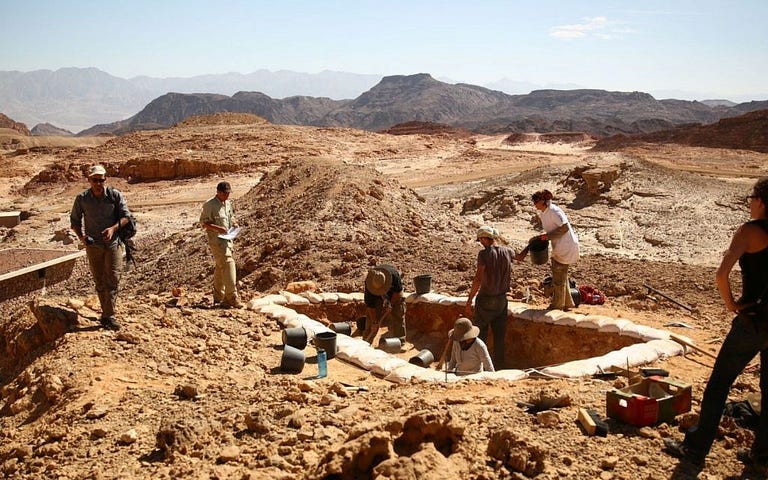https://www.popularmechanics.com/science/archaeology/a29155525/ancient-edomites-copper/
Once Considered 'Simple,' the Ancient Edomites Were Actually Tech Geniuses
Copper was the must-have tech of the ancient world, and Edomites were its master.

- The Edomites were portrayed as aggressors in biblical texts. but there's more to their story, according to a new study.
- With help from the nearby Egyptians, the Edomites developed technological prowess with a hot commodity at the time: copper.
- Studying ancient slag, archaeologists were able to uncover a complex geopolitical situation in the year 10,000 BCE.
The Edomites, an ancient kingdom derided in biblical texts as simple, have been underestimated for thousands of years, according to a new paper from a team of archaeologists. Far from simple tent-dwellers, the Edomites experienced a massive technological leap in the 10th century BCE, living near what is now southern Israel and Jordan.
"Our study sheds new light on the emergence of the archaeologically-elusive biblical kingdom of Edom, indicating that the process started much earlier than previously thought" says Erez Ben-Yosef of Tel Aviv University in a press statement.
Ben-Yosef's team was exploring a concept called "punctuated equilibrium," which suggests that societal changes comes through long-term stasis punctuated by short-lived episodes of rapid change as opposed to a slow-and-steady gradual change. To test the idea, the team examined over 150 samples of slag leftover from metallurgical technology in the Wadi Arabah region of the Levant in the Middle East, dating from 1300 to 800 BCE.
Slag, the glass-like byproduct from a metal's smelting process, offered a perfect indicator of technological capability. Copper, an in-demand resource at the time, was used for everything from tools to weapons. Making it quickly, without much waste, would provide many advantages to the Edomites.
"We demonstrated a sudden standardization of the slag in the second half of the 10th century BC, from the Faynan sites in Jordan to the Timna sites in Israel, an extensive area of some 2,000 square kilometers, which occurred just as the Egyptians entered the region," says Ben-Yosef. "The efficiency of the copper industry in the region was increasing. The Edomites developed precise working protocols that allowed them to produce a very large amount of copper with minimum energy."
Like many other tech booms, the Edomite copper proficiency did not happen on its own. The region known as modern-day Israel had just faced invaders in the form of the Egyptian Pharaoh Shoshenq I.
"Based on the appearance of names from the Negev region in the description of this event in Egypt (topographical list at the Temple of Amun in Karnak) it has been suggested that one of the destinations of Shoshenq I's campaign was the Wadi Arabah and its copper industry," writes the team in their new paper describing their findings. "This hypothesis was strengthened recently by the accidental discovery of a rare scarab bearing the throne name of Sheshonq I in Faynan."
Ben-Yosef suggests that the Egyptian invasion might not have been as malicious as previously believed—rather, they could have been opening borders to trade. "The Egyptians were making sure not only that they would get the copper via trade contracts, and also make the industry better. As a super regional power, they may have had tech knowledge from other places, and gave some tech tips to the Edomites' R&D teams," he says, speaking to The Times of Israel.
This leap could have allowed the Edomites to move from the Bronze Age to the Iron Age. The revelations show that the Edomites are much more complex people than simple enemies of the ancient Israelites as depicted in the Bible.
"Studying the technology itself allowed us to know something about these people," says Ben-Yosef. "Now we know they had a complex social organization — well-organized and centralized under one leadership."
No comments:
Post a Comment